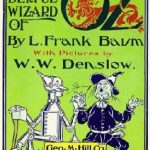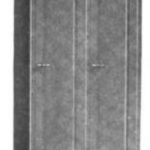Review Of Punctuation Marks
.
Period -This simple dot was the first punctuation mark invented. It was created accidentally by medieval monks who tapped their pens on the parchment when afflicted with writer’s block, then eventually gave up. In British grammar this punctuation mark is known as the “full stop” because the British still communicate by telegram.
,
Comma-A dot with a tail dangling below the line of text the comma is used to divide sentence clauses, items in lists, and occasionally exhausted boxers.
:
Colon-Two vertical dots. The colon is the punctuation mark commonly used to both divide and indicate connections between two items or clauses, as in the case of analogies, and is also the punctuation mark most likely to invade an undeveloped territory and claim its resources.
;
Semicolon-A dot placed vertically over a comma. The semicolon is frequently used to divide sentences of clauses of the same or similar value. Although serving a slightly lesser function than the colon the semicolon prefers fair trade practices, and both punctuation marks should be checked regularly in texts aged fifty years and older.
?
Question mark-A curved line with a straight section pointing downward over a period the question mark indicates an interrogative even in the absence of words such as “Why?” or “Where?” An upside down and backward-facing question mark is placed at the beginning of interrogatives in Spanish because it’s a polite language that doesn’t want to spring a question on you when you’re not expecting it.
!
Exclamation point-This straight line over a period is used to indicate excitement, surprise, or emphasis. In British grammar this punctuation mark is known as “the boingy dance stick”.
‘ or “
Quotation marks-Essentially commas, but placed at the top of the text line, quotation marks may be either straight or inverted to indicate speech or conversation within a text. In British grammar only one quotation mark is used at the beginning and end of a statement, but in American grammar two quotation marks placed together are used, because Americans are twice as loud.
( )
Parentheses-Curved lines used to close off a section of text. The beginning of the parenthetical is indicated by a line curving outward to the left while the closure is indicated by a line curving outward to the right. Text within parentheses should be treated carefully and may be poisonous.
[ ]
Square brackets-parenthesis made of straight lines, also known as hard brackets or crotchets, square brackets are used in mathematical equations and parentheticals inserted by a computer.
{ }
Curly brackets-also known as moustache brackets these are for parentheticals written in cursive.
#
Pound sign-While traceable back to Roman times for a measure of weight this became a popular symbol for the British pound in the 19th century, although some computer keyboards recognized Shift-3 as £. Now popularly known as a “hashtag” it’s served with eggs and bacon.
&
Ampersand-This punctuation mark is used as a substitute by people who are too lazy to write out the word “and” but still have the energy to say “ampersand”.
*
Asterisk-This star-shaped punctuation mark is commonly used to draw attention to a footnote.
†
Dagger-This punctuation mark is for secondary footnotes and used to stab people who don’t read the first footnote.
Ü
Umlaut-Two dots placed vertically over a letter, the letter U in this example. The umlaut is the only punctuation mark that does not have a grammatical or phonic use; its sole function is to indicate Scandinavian death metal.







This is too funny–I wish I’d had this when I was still teaching–the kids would have loved it!
mydangblog recently posted…Mid-Week Post: My Guest Appearance on Happiness Between Tails by da-AL
Sometimes I think I should have gone into teaching, although I know the hours are terrible. And it’s probably just as well you never had a chance to play the song “Oxford Comma” for the kids. Funny thing: it was a teacher who marked up one of my first ever long papers because I didn’t use the Oxford comma. I’ve been wedded to it ever since and it irks me that it’s now fallen out of fashion.
These clever and silly posts that also somehow manage to be informative are my favorite. Love this one!
It’s weird but I feel like I’ve failed in some way if I actually manage to be informative. There are so many places for legit information and I really just want to muddy the waters.
What she said.
Or you could have gone with the theme of the post and said “ditto”. 🙂
This is very really unique helpful information. keep it up. Thank you so much!
Thank you for dropping by.
!@#$%^&*()_-+={[}]|:;”‘<,>.?/!
I think you know that that means, Chris. Thanks for the great post!!!!!!!
I think you know my favorite swear word is “grawlixes” and I’m glad you reminded me of it.
Sharing this gem, love your humor.
I’m so glad I made you laugh.
Hilarious; well done, “you”!*
*{which did I forget?] 🙂 #&SoForth.
Mr. Waldrop, I think we’re going to be good friends. This is brilliant: you succeeded in confounding even this grammar-obsessed (and sometimes rebellious) lover of all things duplicity and wit!.
How did I do? 😉
If I were giving grades I’d give you an A plus, with a bonus digression on the history of the “plus” sign.
“because Americans are twice as loud” is #genius!
That’s the only explanation I could come up with for our insistence on double quotation marks. True fact: the New York Times stopped using the Oxford comma because they said it would save so much ink per year. They’d save even more if they used single quotations.
LOL, where do you come up with this stuff? Here’s a fun (not so much) fact. The ASCII code for the asterisk is 42, which of course, is the answer to life, the universe, and everything.
Arionis recently posted…Stephen King Jr? Not So Much.
Where do I come up with this stuff? Mostly from sitting around staring at a keyboard. And here’s a funny coincidence: the asterisk, with its ASCII code of 42, looks a lot like Kurt Vonnegut’s drawing of an asshole which he also used as part of his signature. I’m not sure if I want to know if these things are connected.